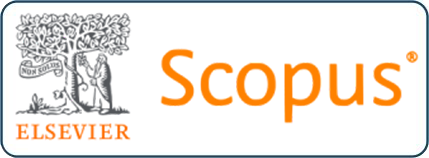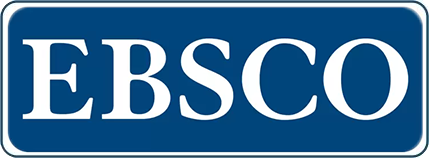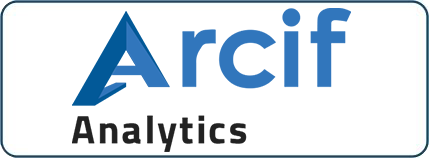Mudharabah Instrument Via an Integrated Waqf–Equity Crowdfunding Model For Sustainable Blended Financing In Malaysia
DOI:
https://doi.org/10.33102/jfatwa.vol30no2.694Keywords:
waqf, mudharabah, equity crowdfunding, islamic finance, islamic social financeAbstract
This study aims to develop a new model of mudharabah blended financing through integration between waqf fund and equity-based crowdfunding in Malaysia. Since this study is exploratory in nature, it is designed based on qualitative research methodology. The data is based on semi-structured interviews with related experts and practitioners in Shariah, crowdfunding, and State Religious Islamic Councils (SRICs). The findings reveal that mudharabah might be risky as the crowdfunding instrument and waqf-based financing. Nevertheless, both can be integrated as a blended instrument to enhance the efficiency of mudharabah and minimize its risks. Through this model, the waqf fund and investors can join to support potential business projects through an equity-based crowdfunding platform. Through the platform, business owners can convince investors and waqf fund managers about their projects, and their progress can be efficiently monitored to minimize the risk. This study proposes a new working model of mudharabah blended financing through an integration between waqf fund and equity-based crowdfunding. This model can empower entrepreneurs to operate their businesses with greater autonomy, creativity, and accountability as well as contributes to the sustainability of waqf fund. While this study is an exploratory on a potential model from Shariah's perspective, its findings may not be generalized into other aspects. Moreover, this study is limited to Malaysia, which has a unique legal framework on waqf administration. Nevertheless, a new practical model of mudharabah blended financing is proposed through the findings and discussion of this study. This model can be applied with a strategic collaboration between the Security Commission as a regulator for the crowdfunding market and SRICs as the sole authority on waqf in Malaysia.
Downloads
References
AAOIFI (2015), “Sharia standards for islamic financial institutions”.
Ab Rahman, M. F., Abdullah Thaidi, H. A., Mohamad Suhaimi, F., & Ab Rahim, S. F. (2024). Proposed temporary waqf model for family waqf implementation in Malaysia. Journal of Islamic Accounting and Business Research, Vol. 15 No. 1, pp. 56-78.
Abdeldayem, M. and Aldulaimi, S. (2022), Developing an Islamic crowdfunding model: a new innovative mechanism to finance SMEs in the Middle East, International Journal of Organizational Analysis, Vol. 31 No. 6, pp. 2623-2644. doi: 10.1108/IJOA-02-2022-3159.
Abdullah, A., Hashim, S., Siraj, S., & Awang, M. (2021). Waqf Agencies and Tax Incentives in Malaysia. International Journal of Academic Research in Business and Social Sciences, Vol. 11 No. 12, pp. 2092-2102.
Aderemi, A.M.R. and Ishak, M.S.I. (2023), Qard Hasan as a feasible Islamic financial instrument for crowdfunding: its potential and possible application for financing micro-enterprises in Malaysia, Qualitative Research in Financial Markets, Vol. 15 No. 1, pp. 58-76. https://doi.org/10.1108/QRFM-08-2021-0145
Al-Zuhaili, W. (2006), Fiqh al-Islami wa Adillatuhu, Dar al-Fikr, Damascus.
Ali, N. A. & Ruzian, M. (2020), The challenges in implementing cash waqf in Malaysia. Journal of Contemporary Islamic Studies, Vol. 6 No. 2, pp. 1-8.
Amin, H., Hassan, M. K., & Shaikh, I. M. (2024). Waqf-based qardhul hassan financing preference in Malaysia: an exploratory study. International Journal of Ethics and Systems, Vol. 40 No. 3, pp. 651-671.
Ari, I., & Koc, M. (2021). Towards sustainable financing models: A proof-of-concept for a waqf-based alternative financing model for renewable energy investments. Borsa Istanbul Review, Vol. 21, pp.46-56
Asni, F., Zulkifli, M.I. and Yusli, Y. (2024), Acceptance of Zakat institutions in Malaysia towards Micro Credit-Qard Hasan financing through Zakat fund (MCZF) for post-pandemic Asnaf entrepreneurs, Journal of Islamic Accounting and Business Research, Vol. ahead-of-print No. ahead-of-print. https://doi.org/10.1108/JIABR-04-2024-0132
Awad, O., Hamid, H. and Allaymoun, M. (2019), E-Mudaraba suggested system for Islamic investments, Journal of Internet Banking and Commerce, Vol. 24 No. 1.
Azrai Azaimi Ambrose, A. H., Aslam, M., & Hanafi, H. (2015). The Possible Role of Waqf in Ensuring a Sustainable Malaysian Federal Government Debt. Procedia Economics and Finance, Vol. 31 No. 15, pp. 333–345. https://doi.org/10.1016/s2212-5671(15)01205-8
Bakar, R. (2023). Peranan Masyarakat dalam Memperkasakan Wakaf. In Seminar Wakaf Negeri Pahang 2023. pp. 11-20
Battisti, E., Creta, F. and Miglietta, N. (2020), "Equity crowdfunding and regulation: implications for the real estate sector in Italy", Journal of Financial Regulation and Compliance, Vol. 28 No. 3, pp. 353-368. https://doi.org/10.1108/JFRC-08-2018-0109
Beaulieu, T., Sarker, S., & Sarker, S. (2015). A conceptual framework for understanding crowdfunding. Communications of the Association for Information Systems, Vol. 37 No.1.
Biancone, P. Pietro, & Secinaro, S. (2016). The Equity Crowdfunding Italy : a Model Shariah Compliant. European Journal of Islamic Finance IV, Vol. 5, pp. 1–11.
Biancone, P. Pietro, Secinaro, S., & Kamal, M. (2019). Crowdfunding and Fintech: business model sharia compliant. European Journal of Islamic Finance, 12, pp. 1–10. https://doi.org/10.13135/2421-2172/3260
Biancone, P.P. & Radwan, M. (2016). European companies: Evaluation for sharia compliance “opportunities and challenges.” European Journal of Islamic Finance, 5.
BNM. (2022), Financial Sector Blueprint 2022-2026. Bank Negara Malaysia.
Collins, L., & Pierrakis, Y. (2012). The venture crowd: Crowdfunding equity investment into business. Nesta, July, 1–36. http://scholar.google.com/scholar?hl=en&btnG=Search&q=intitle:The+venture+crowd+crowdfunding+equity+investment+into+business#4
Dar, M. S., Ahmed, S., & Raziq, A. (2017). “Small And Medium-Size Enterprises in Pakistan: Definition And Critical Issues”. Pakistan Business Review, Vol. 19 No 1, pp. 46–70. https://doi.org/10.22555/pbr.v19i1.1245
Eldersevi, S., & Muhammad, M. (2021). Asnaf Care:ACase Study of the Malaysian-based Charity Crowdfunding Platform to Combat the Impact of COVID-19. 5th International Conference Of Zakat Proceedings. https://iconzbaznas.com/submission/index.php/proceedings/article/view/309/195
Etikan, I., Musa, S. and Alkassim, R. (2016), “Comparison of convenience sampling and purposive sampling”, American Journal of Theoretical and Applied Statistics, Vol. 5 No. 1, p. 1, available at: https://doi.org/10.11648/j.ajtas.20160501.11
Farahdina Fazial, Sakinatul Raadiyah Abdullah, Muhammad Saiful Islam Ismail, Shahirah Said, & Nur Ilani Mat Nawi. (2024). Sustainability Financing Waqf development on Pondok Institution through Mudharabah Method. Journal of Contemporary Social Science and Education Studies (JOCSSES) E-ISSN- 2785-8774, Vol. 1 No.2, pp. 14–18. https://doi.org/10.5281/zenodo.10317732.
Federal Constitution (2009), Laws of Malaysia, Government of Malaysia.
Firdaus, Muhammad Irkham, Muhammad Abdul Aziz, Daud Sukoco, and Novan Fatchu Alafianta. 2021. Investment Cooperation Agreement on Equity Crowdfunding Platform from the Perspective of Sharia Economic Law. AL-IKTISAB: Journal of Islamic Economic Law, Vol. 5 No. 1, pp. 65-81. https://doi.org/10.21111/al-iktisab.v5i1.5626.
Halal Development Corporation Berhad. (n.d.). Wakaf Halal. hdcglobal.com/ms/wakaf-halal-pks/
Hapsari, M.I., Mohd Thas Thaker, M.A.B., Mohammed, M.O. and Duasa, J. (2022), The likelihood of using crowdfunding-Waqf model in Malaysia, International Journal of Ethics and Systems, Vol. 38 No. 4, pp. 682-701. https://doi.org/10.1108/IJOES-07-2021-0150
Hassan, M. K., Ashraf, A. (2010). An Integrated Poverty Alleviation Model Combining Zakat, Awqaf and Micro-Finance. Seventh International Conference – The Tawhidi Epistemology: Zakat and Waqf Economy, 261–281.
Hassan, R., & Yusoff, A. (2020). Enhancing good governance practices of waqf institutions: learning from Shariah governance framework of Islamic financial institutions. International Journal of Islamic Economics and Finance Research, Vol. 3 No. 2, pp. 65-76.
Hendratmi, A., Sukmaningrum, P. S., Ryandono, M. N. H., & Ratnasari, T. (2019). The role of Islamic crowdfunding mechanisms in business and business development. GATR Journal of Business and Economics Review, Vol. 4 No. 1, pp. 10–23. https://doi.org/10.35609/jber.2019.4.1(2
Hendratmi, A., Sukmaningrum, P.S., Ryandono, M.N.H. and Ratnasari, R.T. (2019), “The role of Islamic crowdfunding mechanisms in business and business development”, Journal of Business and Economics Review, Vol. 4 No. 1, pp. 10-23, available at: www.gatrenterprise.com/GATRJournals/ index.html
Hox J, J., & Boeije R, H. (2005). Data collection, primary versus secondary, pp. 1–8.
Hsieh, H.F. and Shannon, S.E. (2005), “Three approaches to qualitative content analysis”, Qualitative Health Research, Vol. 15 No. 9, pp. 1277-1288, available at: https://doi.org/10.1177/ 1049732305276687
Ibn Munzir, M. (1999), Al-Ijma, in Hanif, M. (Ed.), al-Maktabah al-Furqan, Ajman.
IIFA. (2009), Qarar bishani tawarruq. The International Islamic Fiqh Academy. Available at: http://www.iifa-aifi.org/2302.html
Ishak, M. S. I. (2024). Fund Protection in Equity Crowdfunding Based on Maqasid Values in Malaysia. Labuan E-Journal of Muamalat and Society (LJMS), Vol. 18 No. 1, pp. 18–28. Retrieved from https://jurcon.ums.edu.my/ojums/index.php/LJMS/article/view/4850
Ishak, M.S.I. and Rahman, M.H. (2021), "Equity-based Islamic crowdfunding in Malaysia: a potential application for mudharabah", Qualitative Research in Financial Markets, Vol. 13 No. 2, pp. 183-198. https://doi.org/10.1108/QRFM-03-2020-0024
ISRA (2023), Islamic Financial System: Principles and Operations, ISRA, Kuala Lumpur.
ISRA (2024), Islamic Capital Market: Principles and Practices, ISRA and Securities Commission Malaysia, Kuala Lumpur.
Jenik, I., Timothy, L., & Nava, A. (2017). Crowdfunding and Financial Inclusion. In Cgap (Working Paper) (Issue March).
Johnson, P., Buehring, A., Cassell, C., & Symon, G. (2006). Evaluating qualitative management research: Towards a contingent criteriology. International Journal of Management Reviews, Vol. 8 No. 3, pp.131–156.
Kraus, S., Richter, C., Brem, A., Cheng, C., & Chang, M. (2016). Strategies for reward-based crowdfunding campaigns. Journal of Innovation & Knowledge, Vol. 1 No. 1, pp. 13–23. https://doi.org/10.1016/j.jik.2016.01.010
Lahsasna, A. (2013) Maqasid al-Shariah in Islamic finance.Kuala Lumpur: IBFIM.
Lisa M. Given, K.S. (2008), “The SAGE encyclopedia of qualitative research methods”, SAGE Reference Publication.
MAIDAM (n.d.). Projek Wakaf. https://wakaf.maidam.gov.my/
Majid, R., & Sukmana, R. (2023). Designing A Waqf-Based Agricultural Financing Model. Journal of Islamic Monetary Economics and Finance, Vol. 9 No. 3, pp. 443-464. https://doi.org/10.21098/jimf.v9i3.1686
Marzban, S., Asutay, M., & Boseli, A. (2014, April). Shariah-compliant crowd funding: An efficient framework for entrepreneurship development in Islamic countries. In Harvard Islamic Finance Forum, Vol. 2, pp. 272.
Marzban, S., Crowdfunding, S. and Asutay, M. (2014), “Shariah-compliant crowd funding: an efficient framework for entrepreneurship development in Islamic CSR and sustainable development in Islamic banking in Malaysia view project mathematic modeling for Risk-Sharing contracts view project”, Harvard Islamic Finance Forum, Vol. 2, pp. 272. available at: https://doi.org/10.13140/ RG.2.1.2696.1760
Mavrodieva, A. V., Budiarti, D. S., Yu, Z., Pasha, F. A., & Shaw, R. (2019). “Governmental incentivization for SMEs’ engagement in disaster resilience in Southeast Asia”. International Journal of Disaster Risk Management, Vol. 1 No. 1, pp. 32–50. https://doi.org/10.18485/ijdrm.2019.1.1.2
Mazuin, N. (2015), An evolution of mudarabah contract: a viewpoint from classical and contemporary Islamic scholars, Procedia Economics and Finance, Vol. 35, pp. 349-358, available at: https://doi. org/10.1016/S2212-5671(16)00043-5
Mochkabadi, K., Volkmann, C.K. (2020). Equity crowdfunding: a systematic review of the literature. Small Bus Econ 54, pp. 75–118. https://doi.org/10.1007/s11187-018-0081-x
Mollick, E. (2014). The dynamics of crowdfunding : An exploratory study. Journal of Business Venturing, Vol 29 No 1, pp. 1–16. http://dx.doi.org/10.1016/j.jbusvent.2013.06.005.
Mutambatsere, E., & Schellekens, P. (2020). The Why and How of Blended Finance. International Finance Corporation World Bank Group.
MyWakaf (n.d.). Association of Islamic Banking and Financial Institutions Malaysia (AIBIM).
Nowell, L.S., Norris, J.M., White, D.E. and Moules, N.J. (2017), “Thematic analysis: Striving to meet the trustworthiness criteria”, International Journal of Qualitative Methods, Vol. 16 No. 1, pp. 1-13, available at: https://doi.org/10.1177/1609406917733847
Osman, S., Mat, I., Ahmad, J., & Othman, Y. (2015). Unlocking Value Of Waqf Property Using Hibah Mudharabah: A Case Study Of Commercial Buildings In Kedah, Malaysia. International Journal of Development Research, Vol. 5 No. 5, pp. 4294-4299.
Priyadi, U., Achiria, S., Imron, M. A., & Zandi, G. R. (2023). Waqf management and accountability: Waqf land financing models for economic wellbeing. Asian Economic and Financial Review, Vol. 13 No. 1, pp. 74-84.
Rahmalan, M. T., & Hussin, M. F. A. (2021). A Systematic Review of Contemporary and Innovative Waqf Sources: Cash and Service Waqf. Jurnal Syariah,Vol. 29 No. 2, pp. 257-284.
Ramy, A., Floody, J., Ragab, M. A., & Arisha, A. (2018). A scientometric analysis of Knowledge Management Research and Practice literature: 2003–2015. Knowledge Management Research & Practice, Vol. 16 No. 1, pp. 66-77.
Saiti, B., Dembele, A., & Bulut, M. (2021). The global cash waqf: a tool against poverty in Muslim countries. Qualitative Research in Financial Markets, Vol. 13 No. 3, pp. 277-294.
Salido-Andres, N., Rey-Garcia, M., Álvarez-González, L. I., & Vázquez-Casielles, R. (2019). Determinants of success of donation-based crowdfunding through digital platforms: The influence of offline factors. CIRIEC-España Revista De Economía Pública Social Y Cooperativa, 95, pp. 119–141. https://doi.org/10.7203/ciriec-e.95.13001
SCM. (2023a). Guidelines on Recognized Markets.Kuala Lumpur: Securities Commission Malaysia.
Shafii, Z., Mohd. Yusoff, Z. and Md.Noh, S. (2013), Islamic Financial Planning and Wealth Management, IBFIM, Kuala Lumpur.
Thaker, M.A., Thaker, H.M.T. and Pitchay, A.A. (2018), “Modeling crowdfunders’ behavioral intention to adopt the crowdfunding-waqf model (CWM) in Malaysia: the theory of the technology acceptance model”, International Journal of Islamic and Middle Eastern Finance and Management, Vol. 11 No. 2, pp. 231-249, doi: 10.1108/IMEFM-06-2017-0157.
Waqaf An-Nur. (n.d.). Dana Niaga - Pembiayaan Untuk Usahawan Mikro. http://www.waqafannur.com.my/content/Dana-Niaga
Wilson, K.E. Testoni, M. Wilson, K.E. and Testoni, M. (2014), “Policy improving the role of equity crowdfunding in Europe’s capital markets crwodfunding in Europe’s capital markets”.
Yasar, B. (2021). The new investment landscape: Equity crowdfunding. Central Bank Review, Vol 21 No 1, pp. 1-16.
Zhang, Y. (2012). An empirical study into the field of crowdfunding. Economic Policy, 34, pp. 231–269. http://lup.lub.lu.se/luur/download?func=downloadFile&recordOId=3049774&fileOId=3049777
Downloads
Published
Issue
Section
License
Copyright (c) 2025 Muhammad Shahrul Ifwat Ishak, Abdulmajeed M.R. Aderemi, Nur Rasyidah Kamaruzaman, Mohd Izuwan Mohd Izuwan

This work is licensed under a Creative Commons Attribution 4.0 International License.
The copyright of this article will be vested to author(s) and granted the journal right of first publication with the work simultaneously licensed under the Creative Commons Attribution 4.0 International (CC BY 4.0) license, unless otherwise stated.















